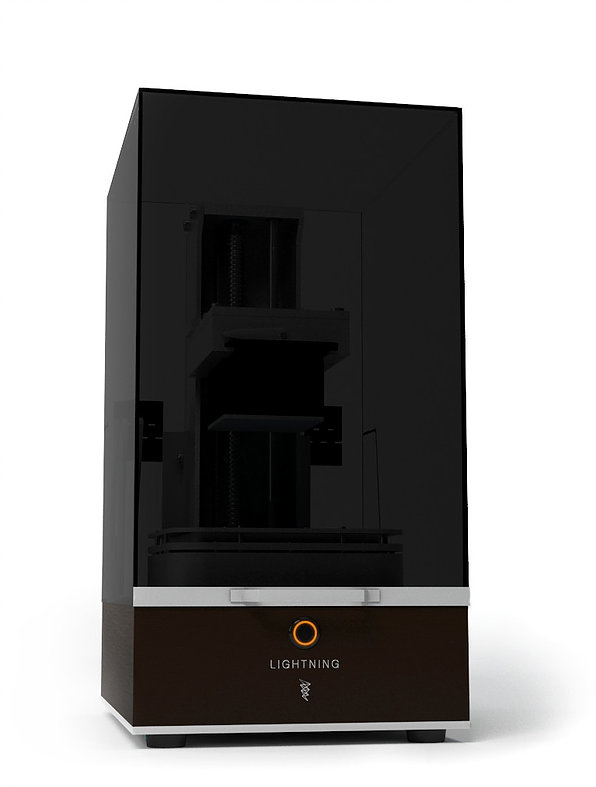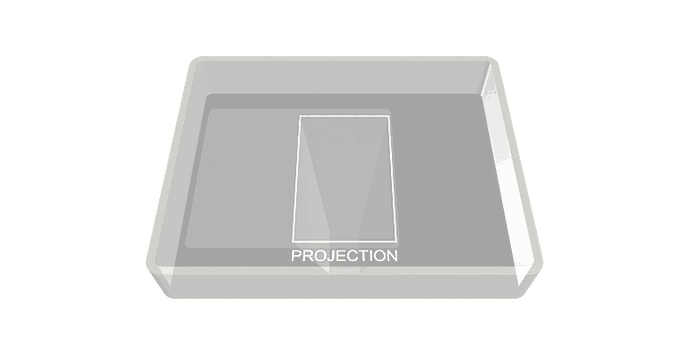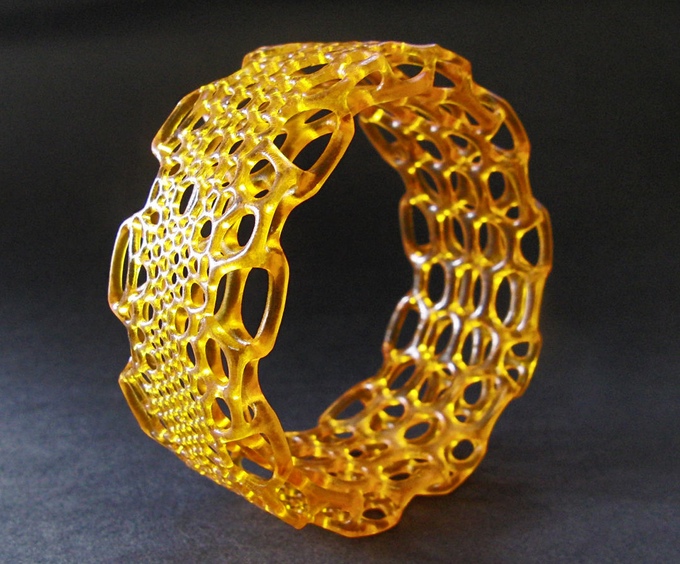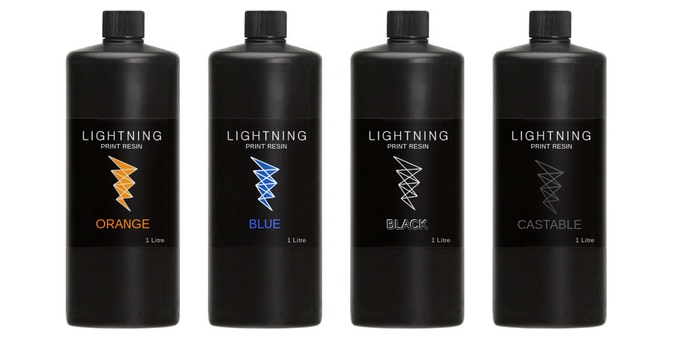
A newly launched desktop resin-based 3D printer, the Lightning, includes a couple of surprising features.
Another UV-DLP resin 3D printer, you say? Well, yes, that is the technology behind this particular device, but the company has managed to figure out a way to increase size and resolution in ways not seen previously on desktop 3D printing equipment.
The problem they have overcome is this: DLP-based 3D printers are constrained by resolution. This is because they all use projectors with similar DLP chips that have a fixed number of pixels. DLP 3D printers simply focus that light onto a liquid resin surface at a particular size.
In other words, if the projector produces 1920 x 1080 pixels (HD format, as the chip was designed for video, not 3D printing), those 2,073,600 pixels will fuse voxels of resin regardless of the size of the projection. If projected over a small area, say 80 x 80mm, you will get fine resolution. On the other hand, if you projected them on a large area, say 300 x 300mm, you get a much coarser object.
Up to now DLP-resin 3D printers had to choose between large & coarse or small & fine. Some machines have an ability to choose either of those options, but never large & fine.
Some resin 3D printers overcome this limitation by using lasers instead of DLP projections to fuse the resin, but it requires the laser to laboriously traverse all solid parts of each layer, dramatically slowing the printing process.
The Lightning 3D printer overcomes this limitation by performing multiple exposures of the resin surface. They project the 1920 x 1080 pixels onto one portion of the liquid, and then move the projector to display on the remainder of the surface. Watch this graphic show how it works:

This enables the Lightning to develop objects with MORE THAN the DLP chip’s resolution. This approach has not been seen (at least by me) in desktop 3D printing equipment. It has been used in larger industrial equipment a few years ago, specifically from PRODWAYS.
It is an effective process and makes the Lightning quite different from other desktop resin 3D printers. Their build volume is 80 x 98 x 200mm at a resolution of 0.062mm XY and 0.025mm Z. That’s very good!
Here we see an example of a detailed 3D print from the Lightning, a complex bracelet shape with a diameter of 8cm. Smooth!

But that’s not all. The Lightning has a couple of other surprises.
Their resin tank is coated with a Teflon FEP film layer to dramatically increase durability – most other tanks wear out and become optically compromised, making progressively worse prints. Not so on the Lightning.
The tank feature enables very rapid printing, said to be up to 38mm per hour.

The Lightning is also an open materials machine: while the company sells a series of suitable resins and is developing more, you are entirely able to use any UV-curable resin you can find elsewhere – at the best cost.
Finally, the Lightning has a custom LED-based projector, unlike most other units that simply employ an off-the-shelf DLP projector optimized for video projection. Instead, the Lightning folks have produced an energy efficient LED projector that should last far longer than a bulb-style DLP projector. No need to buy replacement bulbs!
The Lightning also includes a robust aluminum frame, WiFi connectivity and custom software, all of which are the defacto standard features these days to enter the market.
What does this machine cost? Currently you can still order one from their launch campaign at the relatively low price of £1,600 (USD$2,090). That’s a very good price for what seems to be a powerful machine.
Via Lightning3D and Kickstarter

